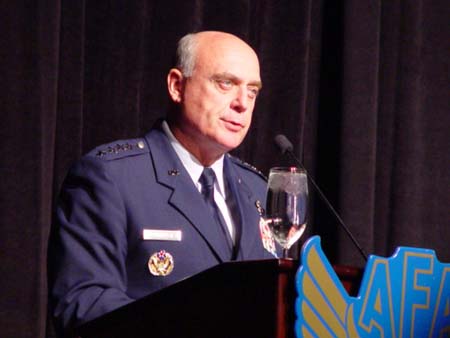T he status quo in the Pacific region is something short of peace even though the region is not at war. So said Gen. Howie Chandler, the new commander of Pacific Air Forces, in his Feb. 21 speech before AFA’s Air Warfare Symposium in Orlando. The Pacific region is home to the five largest militaries in the world, he noted. The tensions are sometimes severe. One of the five (clearly China, though Chandler did not name names for any of these examples) has a military that is rapidly modernizing with new missiles and fourth-generation fighter aircraft while it is far from transparent about its military spending or intentions. A second nation (Russia) has doubled its military spending over the past five years, has resumed Cold War-style bomber flights, and is actively exporting advanced fighters on the world market. A third (North Korea) has developed nuclear weapons and long-range ballistic missiles while allowing its population to starve. The US commitment to the region helps preserve the peace and consequently, Chandler said, PACAF must constantly reorganize and improve its capabilities in the theater.
he status quo in the Pacific region is something short of peace even though the region is not at war. So said Gen. Howie Chandler, the new commander of Pacific Air Forces, in his Feb. 21 speech before AFA’s Air Warfare Symposium in Orlando. The Pacific region is home to the five largest militaries in the world, he noted. The tensions are sometimes severe. One of the five (clearly China, though Chandler did not name names for any of these examples) has a military that is rapidly modernizing with new missiles and fourth-generation fighter aircraft while it is far from transparent about its military spending or intentions. A second nation (Russia) has doubled its military spending over the past five years, has resumed Cold War-style bomber flights, and is actively exporting advanced fighters on the world market. A third (North Korea) has developed nuclear weapons and long-range ballistic missiles while allowing its population to starve. The US commitment to the region helps preserve the peace and consequently, Chandler said, PACAF must constantly reorganize and improve its capabilities in the theater.
Secretary of Defense Pete Hegseth visited the site of U.S. Space Command’s future home Dec. 12 and endorsed the move to establish the headquarters in Alabama after years of political back and forth.

